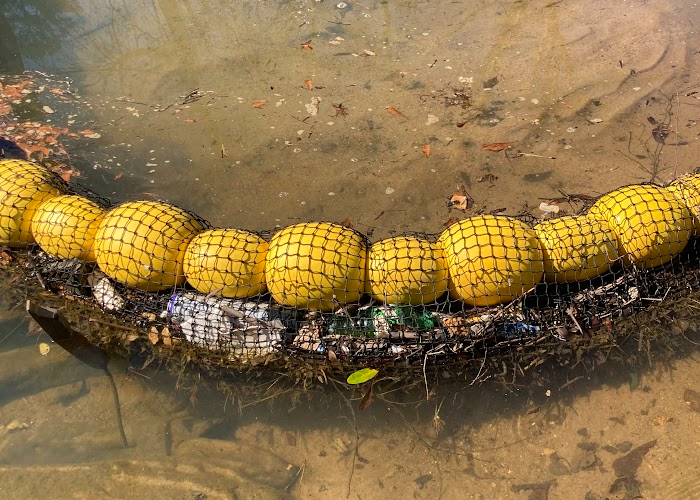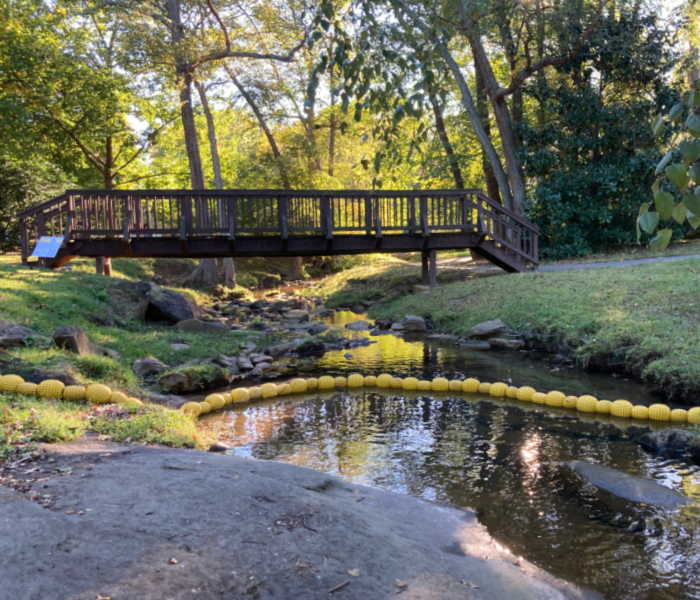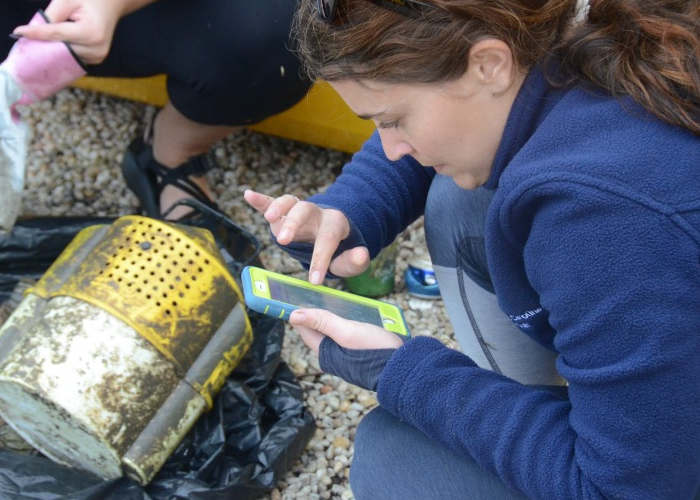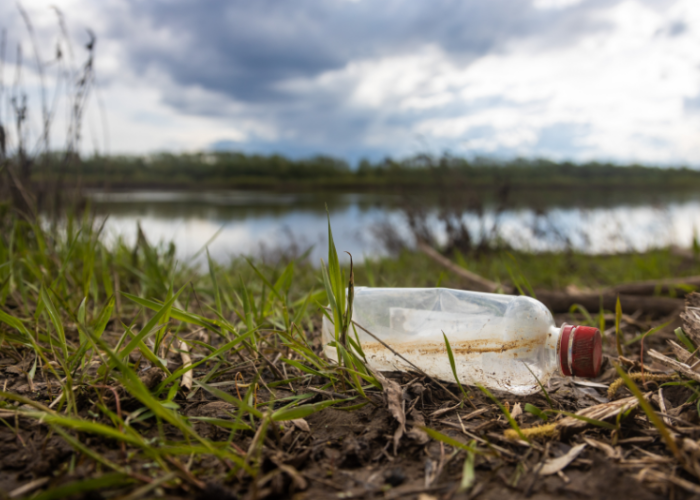You may have heard of the microscopic water bear and the not-so-teensy water bug, but what about the mysterious WATERGOAT? This enigmatic species eats everything in its path, clearing waterways of debris and…
Ok, ok, you got us, the WATERGOAT isn’t actually an animal — it’s a device used to capture floating debris, gobbling it right out of our waterways! WATERGOAT devices have been installed in three locations across South Carolina, one of which was advocated for by South Carolina Aquarium lead volunteer conservation assistant Joyce Harrison, who lives in the Upstate. These devices are actively removing pollution and debris from our waterways, mitigating our climate impact and contributing to citizen science data along the way.
Goat a Load of This
So now you’re probably wondering what this wild contraption looks like. The main structure is a strong net with buoys to help it float at the surface. Each device is customized to fit the specific location, allowing water to flow below as it catches floating debris on the surface. And don’t worry, wildlife is unaffected by the WATERGOAT — in fact, birds and turtles have been seen utilizing the buoys for sunbathing or resting their wings!
 WaterGoat trapping debris; Credit: Beth Button
WaterGoat trapping debris; Credit: Beth ButtonOn average, one WATERGOAT will capture 111 pounds of floating debris monthly; with nearly 200 nationwide, that’s over 250,000 pounds of debris removed annually! Now, what if we could quantify that data and use it to change the way our communities use or dispose of plastic debris?
It’s Not All Baaad News
Last fall, thanks to the hard work of Joyce Harrison and fellow advocate Beth Button, Spartanburg Soil and Water District funded and installed a WATERGOAT in Persimmon Creek on the University of South Carolina Upstate campus. Data from the Litter Journal, a project in the South Carolina Citizen Science app, was used to identify the need for stream debris capture devices to be installed in Spartanburg. After a variety of site visits in the area, Persimmon Creek was chosen as an ideal location for the WATERGOAT.
Not only is this particular location important due to its water sources but it is also in a heavily trafficked area by students and community members. The installation of the WATERGOAT has provided a community engagement opportunity that has grown beyond seeing the WATERGOAT live and in action. Beth Button — who works for Spartanburg Soil and Water Conservation District and takes the lead on cleaning out the WATERGOAT regularly — shares monthly mystery images of the trash the WATERGOAT traps and asks the community to “Guess What the Goat Got”.
 Persimmon Creek WaterGoat; Credit: Beth Button
Persimmon Creek WaterGoat; Credit: Beth ButtonAll information on debris removed from this WATERGOAT is entered into the Litter Journal for public access or use. To date, this WATERGOAT has trapped more than 2,000 pieces of debris. Specifically, about 60% of the items are Styrofoam, which is a common item found in nearly every entry in the Litter Journal. Data collection from the Spartanburg WATERGOAT is helping local organizations evaluate their stormwater pollution.
Citizen Science is the GOAT
Data drives decisions; in fact, it was data from the Litter Journal that helped determine the need for this WATERGOAT, and another is already funded for a second location in Spartanburg County. Litter Journal data has also been used to identify locations for increased signage and waste receptacles in public spaces as well as to support many of the single-use plastic and beach smoking bans in South Carolina coastal communities.
 Collecting litter sweep data in the Litter Journal
Collecting litter sweep data in the Litter JournalThe best part about citizen science projects is that you can contribute to them almost anywhere. These projects help researchers fill in gaps in their datasets, create a sense of community and promote universal and equitable access to scientific data information. And of course, none of this could be achieved without the dedicated citizen scientists in each community collecting debris and entering data!
Celebrate National Citizen Science Month by downloading the South Carolina Aquarium Citizen Science app and exploring the Litter Journal!
Published April 7, 2023


